#cavagne
Explore tagged Tumblr posts
Text
Mistero guardarsi e nel pensarsi lontani…
E non lontani da noi, ma noi nel vento,
tra i mais e l’uva, i salici, le cavagne,
i monti dietro i cipressi che chiamano la sera
e l’ovatta delle nuvole sui castagni
al tuo ritrovarti ragazza nella spera
di polvere del sole e tacere nel farsi vetro
le erbe e i lampioni, nel bere la vera
pazienza del cercarsi e mai toccarsi.
Franco Loi

14 notes
·
View notes
Text
astronomy
Ho ricomprato La Luna è i Falò di Pavese, stimolato dalla mia fantastica collega Debora.Leggendo la prefazione mi è venuto immediatamente in mente Gino, un viticoltore di Mombaruzzo (AT) che frequentavamo decenni fa attorno alla cascina Bazzana, dove andavamo a prendere il vino e anche (noi ancora bambini) a fare la vendemmia, con le cavagne, le cesoie e la bigoncia trainata dal cingolato.Ricordo…
View On WordPress
#astronomia#bazzana#coltivazioni#home#löina#luna#mombaruzzo#Piemonte#tradizioni#vendemmia#vigneti#vino
0 notes
Photo
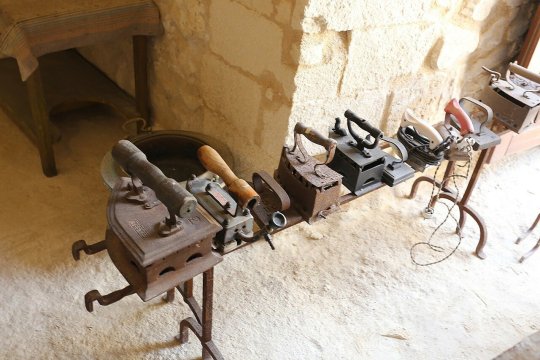
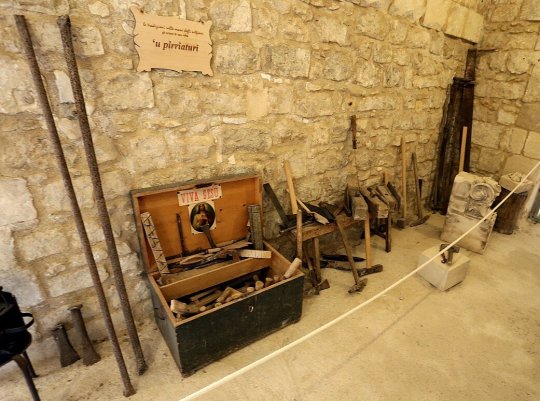
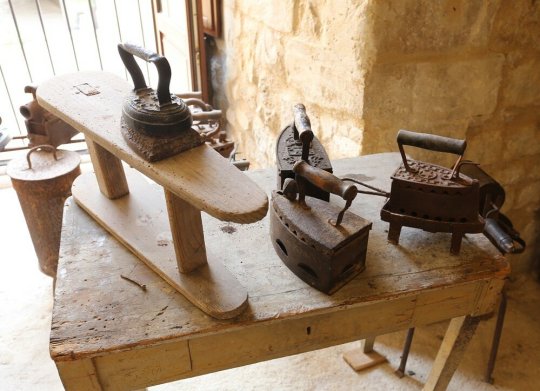
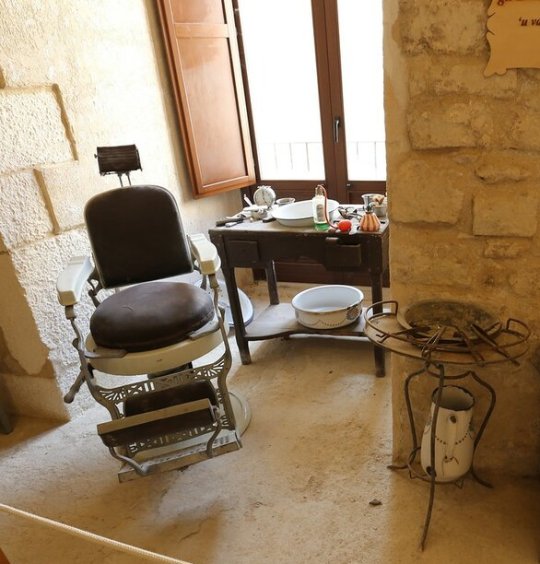
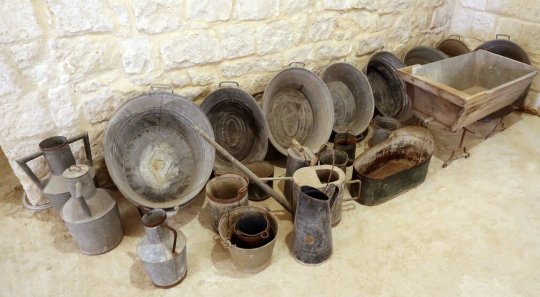
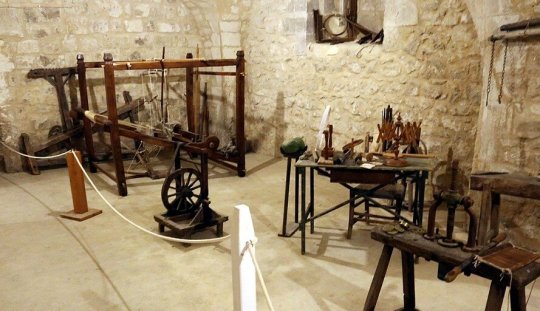




MODICA; MUSEO DEI MESTIERI - Non dimenticarti quando sei a Modica di visitare il Museo dei Mestieri. In ampi locali sono distribuite diverse stanze dove sono raccolti gli antichi strumenti di lavoro. Nei piccoli paesi dispersi nei monti assolati o nelle pianure infuocate, tutto veniva costruito e realizzato localmente in una sorta di economia chiusa dove gli unici acquisti delle famiglie erano il sale e i fiammiferi, tutto il resto era realizzato localmente. Questa economia chiusa si basava su bravissimi e creativi artigiani che con pochi strumenti realizzavano quanto era necessario ai loro concittadini. Da qui l’importanza degli strumenti di lavoro mostrati nel museo. Erano loro a garantire la sopravvivenza del paese. Benché belli ed affascinanti, agli strumenti esposti manca forse la vita che le massaie o gli artigiani gli davano. Prendi ad esempio i ferri da stiro in cui veniva messa la brace rovente e regolarmente della carbonella. Tu vedevi le casalinghe sulla porta di casa che agitavano i ferri da stiro avanti e indietro per fare in modo che la carbonella si accendesse e arroventasse il ferro da stiro. Poi sentivi i colpi del ferro sul tavolo dove si stirava, che diventavano sempre più forti man mano che la stanchezza piegava le braccia alle stiratrici. Gli strumenti dello scalpellino erano tutti in metallo ed erano lunghi pali con cui divedere le pietre dalla montagna fino agli scalpelli con diverse punte per intagliare le pietre con colpi ritmici e regolari, accompagnati magari da una canzone o dal ritmo di una poesia (uno dei più grandi poeti popolari era infatti uno scalpellino. Tanto rumoroso era il lavoro del lavoratore delle pietre quanto silenzioso era quello del sarto che nel buio delle botteghe cuciva in silenzio un punto dietro l’altro con il metro intorno al collo e le stoffe distese su un tavolo con un immancabile metro in legno. Vi era poi il piccolo ferro da stiro e il piccolo asse da stiro per mettere a posto pieghe dei vestiti finiti. Il salone del barbiere invece era sempre rumoroso, pieno di gente con profumi di creme e di sciampi. Vi era sempre una radio che suonava o qualcuno con una chitarra mentre il barbiere parlava con i contadini che scendevano una volta alla settimana in paese per tagliarsi la barba immersi in onde enormi di schiuma da barba alla mandorla. Lo stagnino stava invece sulla strada e dai suoi strumenti proveniva un odore di acido e di fumo metallico mentre lui riparava pentole di rame o bidoni di stagno, le famose quattare metalliche per l’acqua o scatole di latta rettangolari dove si spediva l’olio. Nelle case vi erano poi molti telai, fatti con legno di castagno che scuriva con il tempo. Anche qui sentivi l’andare e venire della spoletta seguito dal doppio colpo che infittiva la trama e il muoversi dei pedali con cui si cambiava l’ordito. Il tessere aveva un rumore ritmico, regolare e preciso che solo le donne riuscivano a mantenere costante sia di giorno che di notte. Chi realizzava canestri lavorava per strada per beneficiare della luce e intesseva canne e legni che aveva raccolto con il fresco al mattino. La canna di fiume era la plastica di una volta; si facevano moltissime cose, dai flauti, alle cavagne in cui si conservava la ricotta, ai canestri in cui si formava il formaggio, ai ripiani su cui stendere la pasta o il pane o far seccare la frutta e i pomodori. Sempre con le canne si facevano anche grosse ceste dentro cui si mettevano strati di lenzuola o tovaglie intervallati dalla cenere. Dall’alto si versava acqua calda che scendeva tra le lenzuola e le puliva con la potassa che veniva sciolta dalla cenere. Le lenzuola diventavano bianchissime ed avevano un odore particolare. I pastori e gli agricoltori poi erano abituati a farsi tutto quanto da soli dai cucchiai alle forme intagliate per il burro. A loro bastava un calderone di rame per fare la ricotta o per far bollire i pomodori per far le conserve, mentre tutto il resto veniva recuperato o trasformato dai prodotti naturali. L’ultima stanza di cui ti parlo è quella del falegname a cui tutti ricorrevano per tutto quello che serviva, dai mobili per lo sposalizio, agli armadi, alle assi per il letto tenuti dalle gambe di ferro battuto, alle botti e, alla fine di tutto, alle casse da morto. Inutile dirti che una volta non vedevi gli enormi immondezzai di adesso perché tutto era prodotto da materiali biodegradabili e quanto non si degradava era riutilizzato.
MODICA; MUSEUM OF TRADES - Do not forget when you are in Modica to visit the Museum of Trades. In large site there are several rooms the ancient work tools are collected. In the small villages scattered in the sunny mountains or in the burning plains, everything was built and built locally in a sort of closed economy where the only purchases of the families were salt and matches, all the rest was made locally. This closed economy was based on talented and creative craftsmen who, with few tools, achieved what was necessary for their fellow citizens. Hence the importance of the work tools displayed in the museum. They were the ones who guaranteed the survival of the village. Although beautiful and fascinating, the tools on display perhaps lack the life that housewives or artisans gave them. Take for example the irons in which the red-hot embers were put and regular charcoal. You saw the housewives on the doorstep waving the irons back and forth to get the charcoal to light up and the iron to heat up. Then you heard the blows of the iron on the table where you ironed, which became stronger and stronger as fatigue folded the arms of the ironers. The stonemason's tools were all made of metal and were long poles with which to divide the stones from the mountain to the chisels with different points to carve the stones with rhythmic and regular strokes, perhaps accompanied by a song or the rhythm of a poem (one of the most great popular poets was in fact a stonemason. As noisy was the work of the stone worker as silent was that of the tailor who in the darkness of the shops silently sewed one stitch after another with the tape measure around his neck and the fabrics stretched out on a table with an inevitable wooden meter. Then there was the small iron and the small ironing board to put away the folds of finished clothes. The barber's salon was always noisy, full of people with scents of creams and shampoos. There was always a radio playing or someone with a guitar while the barber talked to the peasants who came down to the village once a week to shave their beards by huge waves of almond shaving foam. The tinsmith was standing on the street and his tools smelled of acid and metallic smoke while he repaired copper pots or tin cans, tcalled quattare for water, or rectangular tin boxes where olive oil was sent abroad . In the houses there were also many looms, made with chestnut wood that darkened with time. Here too you could hear the coming and going of the spool followed by the double blow that thickened the weft and the movement of the pedals with which the warp was changed. The tesserae had a rhythmic, regular and precise noise that only women could keep constant both day and night. Those who made baskets worked on the street to benefit from the light and wove reeds and woods that he had collected with the cool in the morning. The river reed was the plastic of the past; many things were done, from flutes, to “cavagne” in which ricotta was preserved, to baskets in which cheese was formed, to shelves on which to spread pasta or bread or to dry fruit and tomatoes. Again with the reeds they also made large baskets into which layers of sheets or tablecloths interspersed with ash were put. From the top, hot water was poured down between the sheets and cleaned with potash that was dissolved by the ashes. The sheets became very white and had a peculiar smell. The shepherds and farmers then were used to making everything themselves from spoons to carved shapes for butter. A copper cauldron was enough for them to make ricotta or to boil tomatoes to make preserves, while everything else was recovered or transformed from natural products. The last room I tell you about is that of the carpenter to whom everyone used for everything they needed, from the wedding furniture, to the wardrobes, to the bed boards held by the wrought iron legs, to the barrels and, at the end of everything, to the coffins. It goes without saying that once upon a time you didn't see the huge garbage dumps of now because everything was produced from biodegradable materials and what did not degrade was reused.
20 notes
·
View notes
Photo

#cavagne #ricotta #muriasecco #modica #sicily #sicilia #siciliadom #сицилия #cooking #италия #foodporn #food #foodblogger #travel #traveling #vacation #visiting #instatravel #instago #instagood #trip #holiday #photooftheday #fun #travelling #tourism (presso Modica)
#foodblogger#instago#trip#sicily#cavagne#италия#travel#ricotta#tourism#modica#muriasecco#travelling#cooking#foodporn#food#fun#photooftheday#сицилия#holiday#instagood#vacation#traveling#instatravel#sicilia#siciliadom#visiting
0 notes
Text
Le Code Noir (The Black Code)
In 1685, French king Louis XIV expanded on his father's project to give African slaves in his royal colonies, protections and rights. On Martin Luther King Day, it's especially salient to remember and to look at what could have been. In America, Governor of Louisiana Pierre de Rigaud, Marquis of Vaudreuil (-Cavagnal) upon leaving his post freed his slaves as early as 1750, before becoming in the mid-50s the last French Governor of New France where he had been born. In fact, in modern day Ontario exists a black cemetery dating back to the late 18th century that was itself buried under layers of soil. Louisiana, as everyone knows, was named after the Sun King. Basically, the Code Noir protected Black women who gave birth to mixed children by forcing the White fathers into matrimony. It allowed Blacks to inherit from Whites, and it allowed them to run businesses on their behalf or if inherited. It made into law the obligatory provision of shelter, clothing, linens and food for the workers. It gave them the right to report abuses. It prevented the separation of mother and child. I don't recall the entire code but I'm attaching it here. It was unfortunately voted down in king Louis XIV's parliament on the basis that it sought also to expel non-Catholics such as the English and Jewish from the French possessions to which Frondeur aristocrats objected. It was devised to address widespread corruption in the colonies. To their credit, the English enacted Emancipation in the first decades of the 19th century when they dominated as a superpower. As mentioned in an earlier post, it was the Spaniards who were the last end slavery in Cuba. To hear then that the USA continued the practice of slavery past the mid 1800s, when the first American slave was actually freed in 1750 - thus some 100 plus years earlier under the French colonial power, is exceedingly sad. As a new country, the USA borrowed from European bankers and bound themselves to trade deals that drove them to keep down the costs of labour. Beginning around the mid 1770s, envoys such as John Adams and Benjamin Franklin sought military and monetary aid in Europe. During their pre-presidential careers, John Adams actually discovered upon arriving in Paris in 1778 that Benjamin Franklin had already negotiated with the French. In 1780, Adams persuaded next the Dutch to lend America money. Thomas Jefferson succeeded Adams in Europe from the mid 1780s and was the US diplomatic minister to France where he noted the mass production methods in the making of muskets. Jefferson lived in Paris in the early stages of the French Revolution where he was acquainted with the leading patriots of the Assembly, and was present for the Storming of the Bastille. He later planned the "Haussmanization" of Washington, DC. When Louis XVI was decapitated, he commented that from then on monarchs were amenable to punishment like criminals. Ironically, he negotiated the "Louisiana" Purchase, helped by James Monroe who was US diplomat to France and a Revolutionist sympathizer. Napoleon had already been convinced. (Monroe then tried but failed in Spain to purchase Florida around 1806). John Quincy Adams is the next President after that to have spent time beforehand on the Continent, and from 1809 to 1814 in Russia. He happened to be present when Napoleon invaded Russia, and again when Napoleon returned to Paris from Elba in 1815. All this to say that American Presidents before Abraham Lincoln - who was the 16th, had ample opportunity to emulate England on Emancipation... and yet it still took another "King", in 1968, to make the case for black civil rights.
#presidents#MLK#martinlutherking#slavery#civilrights#1968#AbrahamLincoln#emancipation#USpolitics#AmericanRevolution#FrenchRevolution#LouisXIV#sunking#blackhistory
2 notes
·
View notes
Photo

Che luce negli occhi nel farsi carne l’amore! E viene a noi dell’aria il capovolgersi del tempo, la quiete della campagna e quel sapore di foglie di lauro e d’uccelli sul fieno che si fan d’aria nell’abbandonarsi al vento… E come lucida ai fossi e la bardana! il cielo che cala tra i refoli del frumento! Mistero guardarsi e nel pensarsi lontani… E non lontani da noi, ma noi nel vento, tra i mais e l’uva, i salici, le cavagne, i monti dietro i cipressi che chiamano la sera e l’ovatta delle nuvole sui castagni al tuo ritrovarti ragazza nella spera di polvere del sole e tacere nel farsi vetro le erbe e i lampioni, nel bere la vera pazienza del cercarsi e mai toccarsi.
Franco Loi
Mario Giacomelli, Un uomo, una donna, un amore, 1960 – 61
0 notes
Text
Che luce negli occhi nel farsi carne l’amore!
E viene a noi dell’aria il capovolgersi del tempo,
la quiete della campagna e quel sapore
di foglie di lauro e d’uccelli sul fieno
che si fan d’aria nell’abbandonarsi al vento…
E come lucida ai fossi e la bardana!
il cielo che cala tra i refoli del frumento!
Mistero guardarsi e nel pensarsi lontani…
E non lontani da noi, ma noi nel vento,
tra i mais e l’uva, i salici, le cavagne,
i monti dietro i cipressi che chiamano la sera
e l’ovatta delle nuvole sui castagni
al tuo ritrovarti ragazza nella spera
di polvere del sole e tacere nel farsi vetro
le erbe e i lampioni, nel bere la vera
pazienza del cercarsi e mai toccarsi.
Franco Loi

23 notes
·
View notes
Photo










CANNOLO DAY - LA RICOTTA
Quando mia nonna mi diceva di andare a prendere il latte dal papà del mio amico Santu, io ci andavo più che volentieri. La latteria di Don Ninu, il papà di Santu, era piena di cose bellissime. Per primo il pentolone in rame dentro cui “nasceva” la ricotta. Quando arrivavo vedevo infatti il papà di Santu che girava lentamente il latte nel pentolone fino a che, alla temperatura giusta, metteva il caglio versandolo da una bottiglia piccolissima. Come per magia, la massa liquida si solidificava diventando tenera, morbida, gustosissima ricotta. Don Ninu la raccoglieva con gesti precisi e rapidi con un grande cucchiaio forato versandola nelle “Cavagne” dei piccoli canestri fatti con strisce di canna di fiume e le appoggiava tutte dritte in un gran vaso di terracotta. Dalle strisce di canna scendeva lento il siero del latte che veniva raccolto anche lui in grandi secchi perché serviva per nutrire i maiali. La ricotta era bianchissima e se la mettevi in bocca si scioglieva come una nuvola al sole dell’estate. La nonna di Santu, che ricordo ancora perché era la donna più piccola che avessi mai visto, chiudeva le cavagne con felci verdi che aveva raccolto il giorno prima sui monti e poi aiutava Don Ninu a mettere le cavagne calde in una “bettola” di tela spessa, insieme alle forme di formaggio e alle bottiglie piene di panna calda. Don Ninu si vestiva con la coppola, il giaccone e gli occhiali da sole, mettendo la “bettola” sulla sua vespa per portarla sulla costa, verso la Marina per vendere le ricotte e lasciare le bottiglie di panna presso i laboratori di pasticceria o i bar. Con il latte a volte portavo a casa della nonna la ricotta che mangiavamo dopo la pasta o sul pane o con un po’ di cacao o con il caffè macinato. Quando era festa le zie e la mamma preparavano tantissimi dolci con la ricotta: le fraviole, le torte ed infine i cannoli. Mia madre, finché ha potuto per le feste faceva sempre i cannoli per cui per me la ricotta è sempre stata la messaggera delle feste.
20 notes
·
View notes